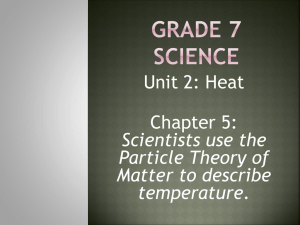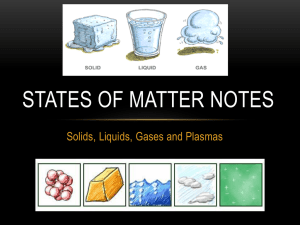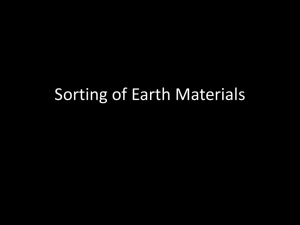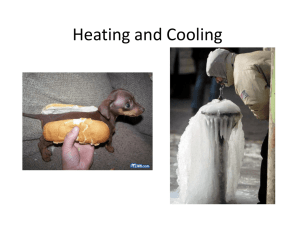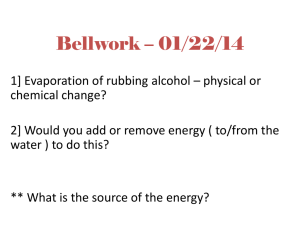Classifying Matter - Grade 7 Science is Awesome!
advertisement
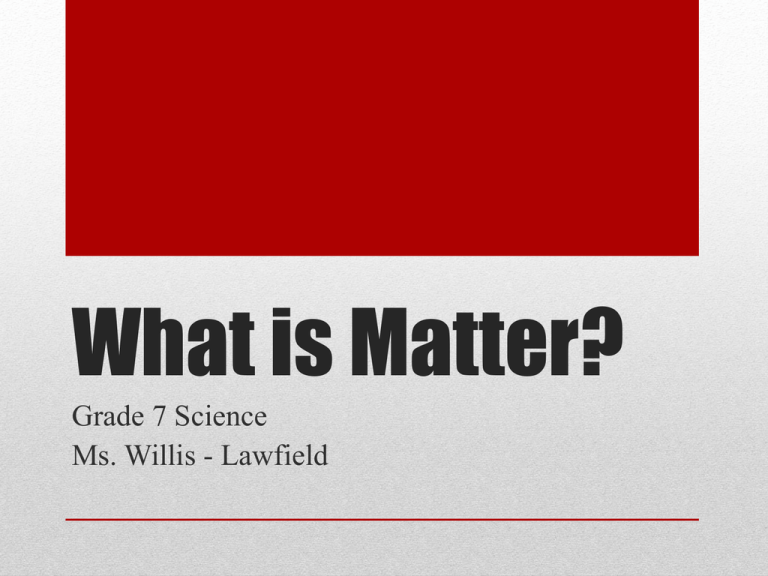
What is Matter? Grade 7 Science Ms. Willis - Lawfield • I can explain the particle theory of matter. • New vocabulary: matter, chemistry, particle theory, solid, liquid, gas, changes of state Learning Goals Definition: Anything that has mass and takes up space. • This includes anything you have ever touched, tasted and smelled. Think wood, steel, ice, shampoo, milk, your entire body! What is Matter? • Chemistry: The study of matter and its changes • People who work in medicine, cooking, art, photography, and solving crime all use chemistry in some way • We use many human-made chemicals (eg. Almond extract, lemonade) The Science of Matter • All matter is made of tiny particles. Different kinds of matter are made of different kinds of particles. • Each particle does not look like the kind of matter they make-up, but when large numbers are put together they look and behave like a piece of matter. • The picture below shows tin foil under a microscope where you can begin to see the particles. The Makeup of Matter • Definition: An explanation of what matter is made of and how it behaves; the particle theory states that all matter is made up of tiny particles that are always moving, that attract each other and that have space between them. The Particle Theory of Matter • 1. All matter is made up of tiny particles • 2. Particles have empty spaces between them. • 3. Even though you cannot see them, particles are always moving randomly all the time. • 4. Particles move faster and spread farther apart when they are heated. • 5. Particles attract each other, so they tend to stay together rather than fly apart. 5 Main Ideas of Particle Theory • This theory helps explain many puzzling observations. For example, when we put a few drops of food colouring in a jar, the food colouring mixes into the water without even stirring. The Particle Theory • Matter behaves very differently in each state of matter. • 1. Solid: A state of matter with a definite volume and a definite shape. (recall the definition of volume – a measure of the how much space occupied by an object) • 2. Liquid: A state of matter with a definite volume but no definite shape; takes the shape of its container. • 3. Gases: Does not have a definite volume or shape; takes the shape and volume of its container. Three States of Matter • The particles of a sample of matter always stays the same, whether the matter is solid, liquid or gas. The difference is that particles move differently in each state. • Solid: the particles are close together and vibrate rather than moving around. (think movie theatre rows of people) • Liquid: The particles are still close, but they move around each other. • Gas: Particles are very far apart and move very fast in all directions with lots of energy. Particles of Solids, Liquids and Gases Particles of Solids, Liquids and Gases • Changes in states of matter happen when matter is heated or cooled. • Discuss the changes of state for water. Changes in States of Matter https://www.youtube.com/watch?v=HAPc6JH85pM • States of Matter Song Song! Let’s Review!




